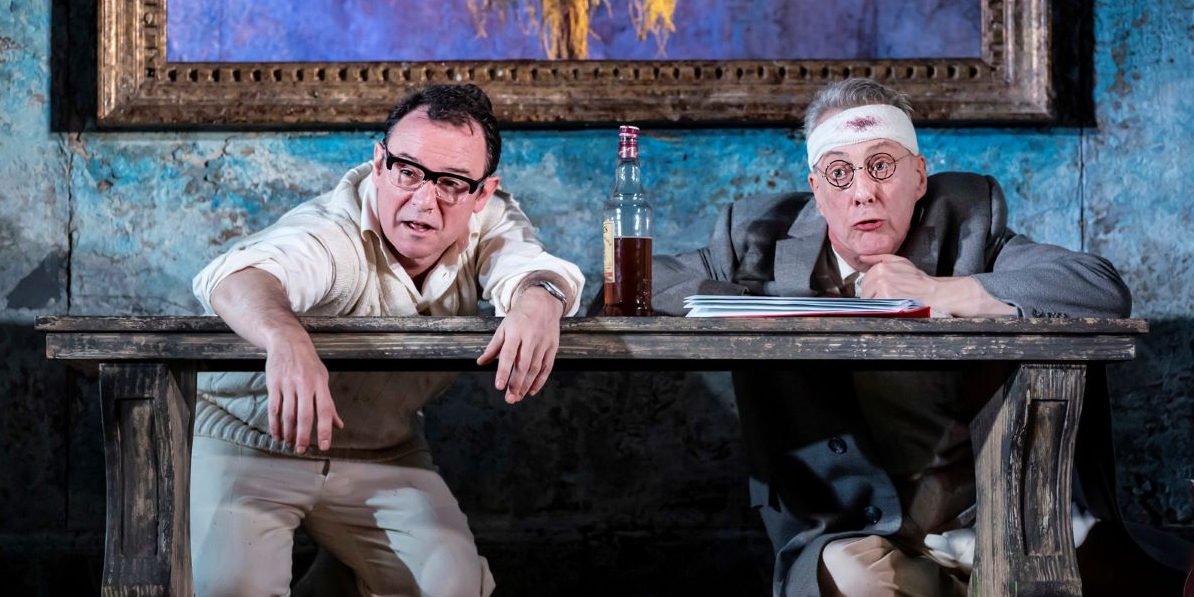‘Stumped’ is one of those plays that works on different levels, and indeed it is that cannily calibrated multi-layered appeal that is perhaps best testament to its quality. One the hand it helps to know a lot about the history of theatre in the twentieth century, the game of cricket and the poetry of Edward Thomas. But on the other it is perfectly possible to appreciate this as an absurdist comedy delivered by two fine actors at the top of their game.
Samuel Beckett and Harold Pinter were both aficianados of cricket, with Beckett having some first-class games in his youth, and Pinter playing as an enthusiastic amateur. This short drama imagines that they were playing on the same team in a match set on a glorious day in the Cotswolds, somewhere near the train station of Adlestrop, famously commemorated by Edward Thomas in a vision of eternal Edwardian summer shimmer. In a sequence of conversations, whether in the scorer’s hut, or on the village green or at the station, the two characters talk at, with, and across each other, all the while engaged in an act of waiting – whether to bat, or to receive a lift home that never comes, or for a train to arrive. There are parallels there, for those who wish to see them, with Beckett’s ‘Waiting for Godot’ and Pinter’s ‘The Dumb Waiter.’
This might on the face of it sound rather arch and static, but that is not at all how it comes across. The dialogue is witty, learned, and wide-ranging and put across with real flair by Andrew Lancel and Stephen Tompkinson. Both of them rightly avoid direct impersonation, but each gives a lively sense of both the human and literary personalities of their models. Lancel, as Pinter, behind the trademark heavy specs, offers linguistic delicacy and thuggish menace; while Tompkinson stays on the right side of Irish whimsy, giving Beckett a sly cunning as well as elaborate fantasy. All of this produces a fine blend of absurdist humour that mounts in intensity as their mishaps on and off the field begin to multiply.
The creative team deserve a lot of credit too not just for the fluid ease with which one scene succeeds another but also for the atmospheric warmth that surrounds the whole. The production is literally framed within an elaborate, gilded picture frame, a most effective and economical way of registering the absence of naturalism and also the status of the principals as national treasures. The set design by David Woodhead offers two doors to either side and an interior space painted a saturated but scuffed, rag-painted blue. Behind a basic bench is a further inset frame containing, as each scene succeeds another, a model of a cricket pavilion, a willow tree and a model of the station, part standing for whole. The actors are in their cricket whites, with pads, bats and a bottle of whisky, and little else. Moody lighting designed by Howard Hudson blends well with an original jazz-inflected score from Mark Aspinall.
This affectionate tribute does not overstay its welcome, delightfully evoking the shades of two Nobel Prize winners while also celebrating some of their perennial themes in language that avoids pastiche. The production carefully cradles the text in suggestive, appropriate atmosphere, serving up a delightful treat for a summer evening as shadows lengthen.

